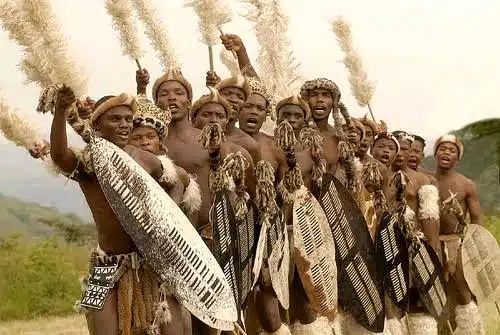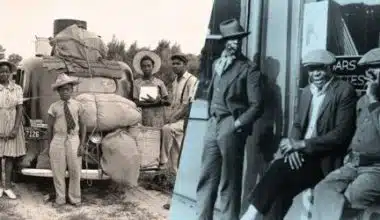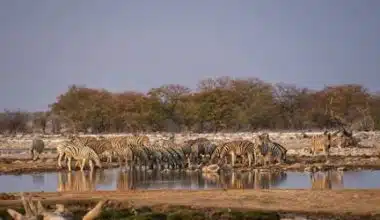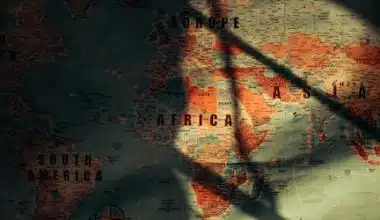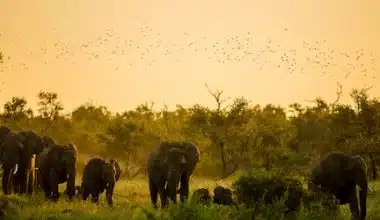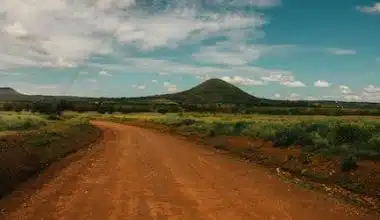Journey into the hearts of the tribes and communities to discover the fascinating stories that have shaped the continent for centuries. Africa is a diverse continent with thousands of ethnic groups, each with its own language and culture. The official population count is uncertain due to rapid population growth. The tribes in Africa overlap with modern-day countries, and many have traditional leadership structures.
Tribes In Africa
Africa is a diverse continent with a rich tapestry of cultures and ethnic groups. The ethnic groups in Africa number in the thousands, with each population generally having its own language and culture. These ethnic groups are often referred to as tribes.
Features Of The Tribes In Africa
#1. Diversity of Ethnic Groups
Africa is home to various ethnic groups, including Afroasiatic, Khoisan, Niger-Congo, and Nilo-Saharan populations.
#2. Language and Culture
Each ethnic group in Africa generally has its own language or dialect and unique cultural practices.
#3. Uncertainty in Population Count
The official population count of ethnic groups in Africa is highly uncertain due to limited infrastructure for censuses and rapid population growth. There have also been accusations of deliberate misreporting to give selected ethnicities numerical superiority.
#4. Genetic Clustering
A genetic clustering study conducted in 2009 identified six ancestral clusters in various African populations, which closely corresponded with ethnicity, culture, and language.
#5. Overlapping Tribes
Colonial powers drew national boundary lines in Africa without much consideration for tribal boundaries. As a result, several tribes overlap into two or even three modern-day countries.
#6. Number of Tribes and Languages
Africa is estimated to have around 3,000 tribes and 2,000 languages and dialects, highlighting the continent’s cultural diversity.
#7. Traditional Leadership
Many tribes in Africa have traditional leadership structures, with chiefs, kings, or queens who hold authority and make decisions on behalf of the community. These leaders serve as custodians of culture and tradition.
#8. Livelihood and Occupation
The livelihoods of African tribes vary depending on their geographic location. Some tribes are predominantly pastoralists, relying on animal husbandry, while others are agriculturalists, fishermen, or engage in trade and craftsmanship.
#9. Oral Tradition and Storytelling
African tribes have a rich oral tradition, passing down their history, myths, and cultural values through storytelling, proverbs, and songs. This serves as a means of education and preservation of tribal heritage.
#10. Cultural Practices and Customs
Each tribe in Africa has its unique cultural practices, rituals, and customs that define its identity. These can include traditional ceremonies, dances, music, art, dress, and religious beliefs.
Indigenous Tribes In Africa
Africa is home to numerous indigenous tribes, each with its own unique culture, history, and way of life. The United Nations defines indigenous peoples as those who have a historical connection to a particular territory before the arrival of colonial powers and who maintain distinct social, economic, and political systems that are often different from the dominant societies in which they live.
Here are some examples of indigenous tribes in Africa:
#1. Maasai Tribe (Kenya and Tanzania)
The Maasai tribe is known for their distinctive culture, traditional clothing, and nomadic pastoralist lifestyle. They are renowned for their intricate beadwork, unique language, and strong cultural identity.
#2. San/Bushmen (Southern Africa)
The San people, also known as Bushmen, are indigenous hunter-gatherer communities in Southern Africa. They have a deep connection to the land and possess extensive knowledge of the natural environment.
#3. Himba Tribe (Namibia)
The Himba tribe is known for their distinctive appearance, characterized by their intricate hairstyles, traditional clothing, and the use of otjize0, a mixture of butterfat and ochre, which they apply to their skin and hair.
#4. Berber Tribe (North Africa)
The Berber people are indigenous to North Africa, primarily inhabiting Morocco, Algeria, Tunisia, and Libya. They have a rich cultural heritage, including their language, traditional music, and unique architecture.
#5. Dogon Tribe (Mali)
The Dogon tribe is known for their unique cosmology, art, and architecture. They have a deep spiritual belief system and are renowned for their intricate masks, sculptures, and cliff dwellings.
#6. Yoruba (Nigeria)
The Yoruba people are one of the largest ethnic groups in Nigeria, with a rich history that dates back centuries. They have a vibrant culture, known for their art, music, dance, and religious practices. The Yoruba have made significant contributions to the history and development of Nigeria.
#7. Pygmy Tribes (Central Africa)
The Pygmy tribes, including the Bambuti, Mbuti, and Twa, are indigenous forest-dwelling communities in Central Africa. They have a unique hunter-gatherer lifestyle and possess extensive knowledge of the forest ecosystem.
#8. Zulu Tribe (South Africa)
The Zulu tribe is one of the largest ethnic groups in South Africa. They have a rich history, known for their warrior traditions, vibrant music and dance, and the legacy of their famous leader, Shaka Zulu.
#9. Oromo Tribe (Ethiopia)
The Oromo tribe is the largest ethnic group in Ethiopia. They have a rich cultural heritage, including their language, traditional music, and unique customs. The Oromo people have played a significant role in Ethiopian history and politics.
#10. Tuareg Tribe (Sahara Desert)
The Tuareg tribe is a nomadic pastoralist community that spans several countries in the Sahara Desert, including Mali, Niger, Algeria, Libya, and Burkina Faso. They are known for their distinctive blue clothing and their expertise in desert navigation.
Old Tribes in Africa
Certain tribes have a long history and have inhabited their respective regions for centuries. Some of these tribes include the San/Bushmen, Berber, Yoruba, Tuareg, Dogon, Himba, Bantu, and Ashanti tribes. These tribes have a long history and have contributed to the cultural diversity of the African continent. Each tribe has unique traditions, cultural practices, and ways of life that have been passed down through generations.
Challenges Facing Old Tribes in Africa
#1. Marginalization and Discrimination
Many old tribes in Africa face marginalization and discrimination, both historically and in the present day. They may experience social, economic, and political exclusion, leading to disparities in access to resources, services, and opportunities.
#2. Loss of Ancestral Lands
Indigenous tribes often face the loss of their ancestral lands due to factors such as land encroachment, resource extraction, and forced displacement. This threatens their cultural survival and disrupts their traditional way of life, as their connection to the land is deeply intertwined with their identity and livelihoods.
#3. Socio-economic Challenges
Old tribes in Africa may face socio-economic challenges, including poverty, limited access to education and healthcare, and inadequate infrastructure. These challenges can hinder their development and perpetuate inequalities within their communities.
#4. Cultural Erosion
The cultural heritage of old tribes in Africa is at risk of erosion due to various factors, including globalization, urbanization, and the influence of dominant cultures. The loss of traditional languages, customs, and practices can have a profound impact on the identity and well-being of these tribes.
#5. Health and Well-being
Old tribes may face health challenges, including limited access to healthcare services, higher rates of infectious diseases, and inadequate sanitation and hygiene facilities. Factors such as climate change, environmental degradation, and conflicts can further exacerbate health risks.
#6. Political and Legal Recognition
Some old tribes in Africa struggle to gain political and legal recognition for their rights, including land rights, self-governance, and cultural preservation. The lack of recognition can hinder their ability to participate in decision-making processes that affect their communities.
#7. Climate Change and Environmental Pressures
Climate change and environmental degradation pose significant challenges to old tribes in Africa. These tribes often have a deep connection to their natural environment, and changes in climate patterns, deforestation, and loss of biodiversity can disrupt their traditional practices and livelihoods.
#8. Language and Cultural Preservation
Old tribes often face challenges in preserving their languages and cultural traditions. As younger generations are exposed to dominant languages and cultures, there is a risk of language shift and cultural assimilation. This can result in the loss of ancestral knowledge, traditional practices, and cultural identity.
#9. Lack of Representation and Participation
Old tribes often face limited representation and participation in decision-making processes at local, national, and international levels. This can lead to their voices being unheard and their interests not being adequately considered in policies and development plans that affect their communities.
#10. Land and Resource Conflicts
Old tribes face conflicts over land and natural resources. Encroachment by external actors, large-scale development projects, and resource extraction activities can lead to land disputes, displacement, and the loss of traditional territories. These conflicts can disrupt the social fabric and livelihoods of tribal communities.
How Many Tribes In Africa
The exact number of tribes in Africa is difficult to determine due to various factors such as the diversity of ethnic groups, linguistic variations, and the fluidity of tribal identities. However, it is estimated that there are thousands of tribes in Africa. Africa is known as a tribal continent with around 3,000 tribes and 2,000 languages and dialects.
Africa is home to thousands of tribes, each with its language, culture, and traditions. Here are different tribes in Africa
#1. Hausa
The Hausa people are one of the largest ethnic groups in Africa, primarily residing in Nigeria, Niger, and Ghana. They are known for their rich cultural heritage, including their language, music, and traditional attire.
#2. Maasai
The Maasai tribe is located in Kenya and Tanzania. They are known for their distinctive clothing, intricate beadwork, and traditional pastoralist lifestyle.
#3. Ashanti
The Ashanti people are one of the largest ethnic groups in Ghana. They have a rich cultural heritage, including their traditional festivals, kente cloth, and oral storytelling traditions.
#4. Fulani
The Fulani, also known as the Fula or Fulbe, are spread across several countries in West and Central Africa, including Nigeria, Senegal, Guinea, and Cameroon. They are known for their nomadic or semi-nomadic pastoralist lifestyle and are recognized for their cattle herding traditions.
#5. Kikuyu
The Kikuyu tribe is the largest ethnic group in Kenya, primarily residing in the central region of the country. They have a rich cultural heritage and are known for their agricultural practices, including coffee and tea farming.
#6. Xhosa
The Xhosa people are one of the largest ethnic groups in South Africa, primarily residing in the Eastern Cape province. They have a unique language and are known for their traditional music, dance, and initiation rituals, such as the Xhosa circumcision ritual.
#7. Igbo
The Igbo tribe is one of the largest ethnic groups in Nigeria, primarily residing in the southeastern part of the country. They have a rich cultural heritage, including their traditional attire, art, music, and festivals.
#8. Amhara
The Amhara people are one of the largest ethnic groups in Ethiopia. They have a rich cultural heritage and are known for their contributions to Ethiopian history, art, music, and literature.
#9. Kalenjin
The Kalenjin tribe is located in western Kenya and is composed of several subgroups such as the Kipsigis, Nandi, and Tugen. They are known for their athletic prowess, particularly in long-distance running.
#10. Mende
The Mende people are one of the largest ethnic groups in Sierra Leone. They have a rich cultural heritage, including their traditional mask-making, music, and dance.
How Many Tribes Are In Africa?
The exact number of tribes in Africa is difficult to determine due to factors such as ethnic diversity, linguistic variations, and the fluidity of tribal identities. However, it is estimated that there are thousands of tribes in Africa, with around 3,000 tribes and 2,000 languages and dialects. The official count and categorization of ethnic groups can be uncertain due to limited infrastructure for conducting censuses and the complexity of tribal identities. Examples of African tribes are the Hausa, Zulu, Maasai, Yoruba, Berber, San/Bushmen, Himba, Dogon, and Ashanti.
What Is The Most Famous Tribe In Africa?
The Zulu, Maasai, Yoruba, and San/Bushmen tribes are among the most famous in Africa due to their cultural significance, global recognition, and portrayal in various forms of media. However, there are many other tribes in Africa with important contributions to the continent’s cultural heritage.
What Is The Most Powerful Tribe In Africa?
Some tribes have been recognized for their historical military prowess and cultural influence. The Somali tribe is often regarded as one of the most powerful warrior tribes in Africa, known for their military warfare tactics and conquests. The Maasai tribe of Kenya and Tanzania is also widely considered to be strong warriors. Other tribes like the Oromo, Zulu, and Mali people have also been recognized for their military capabilities and historical achievements.
What Is The Oldest Tribe In Africa?
The San tribe, also known as the Bushmen, is believed to be the oldest tribe in Africa, with a history of living in Southern Africa for at least 30,000 years. They are considered one of the oldest cultures on Earth and are thought to be descended from the first inhabitants of what is now Botswana and South Africa. The San people have a hunter-gatherer lifestyle and traditionally moved seasonally based on the availability of resources.
Which Country Has 12 Tribes?
The concept of the “12 tribes” is primarily associated with the ancient Israelites. The 12 tribes of Israel are mentioned in the Bible and are believed to be descendants of the sons of Jacob, who was later renamed Israel. The tribes include Reuben, Simeon, Levi, Judah, Zebulun, Issachar, Dan, Gad, Asher, Naphtali, Joseph, and Benjamin. However, it’s important to note that the historical existence and composition of these tribes have been subject to scholarly examination and debate.
Conclusion
Africa is home to numerous indigenous tribes with unique cultures, histories, and ways of life. These tribes contribute to the cultural diversity of Africa and have unique traditions passed down through generations. Factors such as globalization, urbanization, and dominant cultures can further erode their cultural heritage. Africa is home to thousands of tribes, each with its unique language, culture, and traditions. The largest tribes are the Hausa, Maasai, Ashanti, Fulani, Kikuyu, Xhosa, Igbo, Amhara, and Kalenjin. Each tribe has its own unique language, music, dance, initiation rituals, and cultural heritage. Africa is known for its diverse ethnic groups and linguistic variations, making it a diverse and rich continent.
- EAST AFRICAN COUNTRIES: The Ultimate List
- HIMBA TRIBE: Discover the Traditions and Beliefs of the Himba Tribe
- SAN PEOPLE OF AFRICA: History & Rich Cultural Heritage
- The Rich Cultural Heritage of Himba Tribe Women
